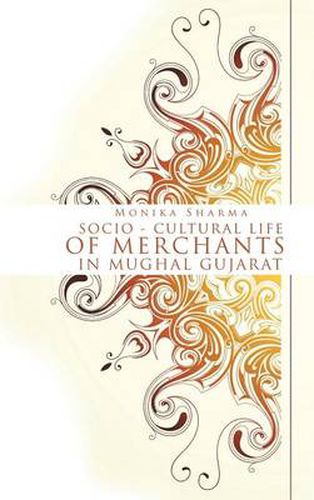Readings Newsletter
Become a Readings Member to make your shopping experience even easier.
Sign in or sign up for free!
You’re not far away from qualifying for FREE standard shipping within Australia
You’ve qualified for FREE standard shipping within Australia
The cart is loading…






This title is printed to order. This book may have been self-published. If so, we cannot guarantee the quality of the content. In the main most books will have gone through the editing process however some may not. We therefore suggest that you be aware of this before ordering this book. If in doubt check either the author or publisher’s details as we are unable to accept any returns unless they are faulty. Please contact us if you have any questions.
‘Socio - Cultural Life of Merchants in Mughal Gujarat’ by Monika Sharma focuses on the identification of the varied communities involved in commercial activities and maritime trade - Banias, Bohras. Parsis, Khojas, Memons, Ghanchis, Chalebis, Armenians and European during 16th-17th centuries. The project embraces life-style, traditions, festivals, institutions and the professional aspects of merchants’ life. The study explores the region of Gujarat its geographical layout, urban set-up, trade centres, cities, manufacturing centres, ports and trade routes. The living standards, viz. housing, system of education, entertainment, the status women, food habits, dresses, ornaments and other aspects of their daily life etc. are investigated in order to make a comparative study of the different cultures. The study intends to know about the religion, social activities, festivals, rituals, marriages, customs and mores followed. The present work entails the investigation of custom, rituals and mores related to society and religion of the various merchant communities. One can also discern the existing social evils like sati, polygamy and enforced widowhood. The focal point of the study is merchants-Mughal nexus too, which is vital to understand the benefits accrued by the merchant communities. In what manner the proximity with imperial court benefitted them and resulted in their social elevation. One of the objectives of this study would be contextualize the idea of money for different merchants, which is discussed in chapter six. How the various communities invested their money to acquire political and social advantages. The stable system of brokers, sarraf and sahukars, mahajan, and nagarsheth which sustained the community are also focussed.
$9.00 standard shipping within Australia
FREE standard shipping within Australia for orders over $100.00
Express & International shipping calculated at checkout
This title is printed to order. This book may have been self-published. If so, we cannot guarantee the quality of the content. In the main most books will have gone through the editing process however some may not. We therefore suggest that you be aware of this before ordering this book. If in doubt check either the author or publisher’s details as we are unable to accept any returns unless they are faulty. Please contact us if you have any questions.
‘Socio - Cultural Life of Merchants in Mughal Gujarat’ by Monika Sharma focuses on the identification of the varied communities involved in commercial activities and maritime trade - Banias, Bohras. Parsis, Khojas, Memons, Ghanchis, Chalebis, Armenians and European during 16th-17th centuries. The project embraces life-style, traditions, festivals, institutions and the professional aspects of merchants’ life. The study explores the region of Gujarat its geographical layout, urban set-up, trade centres, cities, manufacturing centres, ports and trade routes. The living standards, viz. housing, system of education, entertainment, the status women, food habits, dresses, ornaments and other aspects of their daily life etc. are investigated in order to make a comparative study of the different cultures. The study intends to know about the religion, social activities, festivals, rituals, marriages, customs and mores followed. The present work entails the investigation of custom, rituals and mores related to society and religion of the various merchant communities. One can also discern the existing social evils like sati, polygamy and enforced widowhood. The focal point of the study is merchants-Mughal nexus too, which is vital to understand the benefits accrued by the merchant communities. In what manner the proximity with imperial court benefitted them and resulted in their social elevation. One of the objectives of this study would be contextualize the idea of money for different merchants, which is discussed in chapter six. How the various communities invested their money to acquire political and social advantages. The stable system of brokers, sarraf and sahukars, mahajan, and nagarsheth which sustained the community are also focussed.